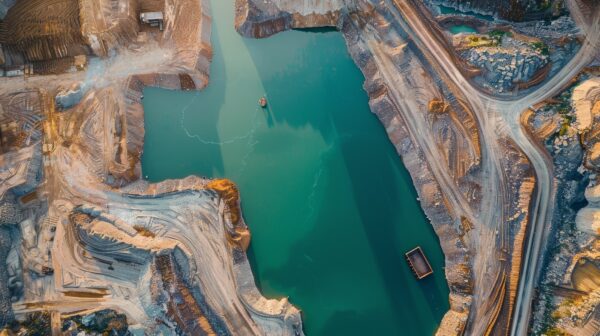This article is an abridged excerpt of a presentation given to the Battery Minerals and Supply Chain 2024 event in Perth, Australia.
The world has set ambitious goals, most notably reaching net-zero emissions by 2050. But the reality is that we’re not on track to meet this target.
According to the International Energy Agency (IEA), achieving net zero by 2050 requires an enormous and rapid scaling up of renewable energy. The IEA highlights that we need to add 630 gigawatts of solar power and 390 gigawatts of wind energy each year by 2030—four times the record levels we set in 2020. And that’s just one piece of the puzzle. The clean energy transition is a multifaceted challenge that demands innovation across multiple sectors – energy, transport, and, notably, mining.
At Clareo, where our clients span mining and energy value chains, we see that the mindset factor at every level and industry is critical to accelerating the transition to a sustainable battery minerals supply chain.
The critical need to change mindsets
The most significant barrier to shifting mindsets in mining, for example, is the industry’s reliance on short-term thinking and the entrenched focus on traditional practices. For decades, mining companies have been able to rely on economies of scale, optimizing operations to extract as much material as possible as efficiently as possible. This worked when the world was focused on growth at all costs, but today, with resource depletion, climate change, and societal expectations around sustainability, that old mindset isn’t enough.
But it’s not just about miners. Transforming mindsets for sustainable battery mineral supply requires the entire ecosystem of governments, customers, and other stakeholders to see their roles and the whole value chain as an integrated whole.
To be successful, we need everyone—from policymakers to manufacturers—to think differently about how we extract and process the minerals that will power the energy transition.”
The role of key stakeholders in mindset change
Governments
Traditionally, governments have focused on regulation, ensuring compliance with standards, and managing land use. But governments must go beyond regulation to actively support innovation—through public-private partnerships, funding, and creating environments that encourage experimentation.
We’ve seen successful examples of this approach in other sectors. For instance, the government has invested heavily in research and development in Norway’s oil and gas industry, including creating the Norwegian Oil and Gas Research Centre. This centre brings oil companies, universities, and technology developers together to foster innovations like carbon capture and subsea technology. Similarly, the Oil & Gas Technology Centre (OGTC) in Aberdeen, Scotland, was established with government backing to drive offshore energy innovation.
In mining, Canada’s Northern Ontario Mining Innovation Hub is another excellent example. The hub focuses on solving industry challenges like reducing environmental impacts and improving mining efficiency.
Ultimately, public-private partnerships and government-backed incentives for innovation can break the inertia we often see in mining. When governments invest in R&D, foster collaboration, and provide the infrastructure for innovation, it gives companies the confidence and support they need to take risks and innovate.
Miners
The old model of maximizing production at all costs while ignoring broader responsibilities is no longer viable. Today, mining companies must think beyond extraction and focus on how they can contribute to the more extensive system of sustainable energy production and consumption. Embracing this shift in mindset, from being merely extractors to being stewards of resources and enablers of innovation, is crucial for the future.
We’ve seen companies like Rio Tinto and BHP begin to embrace this mindset shift by integrating sustainability into their operations. For example, Rio Tinto’s Gudai-Darri mine uses renewable energy to power operations, and BHP has made strides in reducing its carbon footprint by exploring partnerships that help integrate more sustainable technologies.
Customers
The manufacturers and end-users of battery minerals are companies producing electric vehicles, electronics, and renewable energy technologies. Customers have enormous influence in shaping the future of the supply chain. Still, they need to shift from seeing mining companies as just suppliers of raw materials to treating them as strategic partners.
An excellent example of this shift is Tesla. By securing direct partnerships with lithium and nickel producers, Tesla ensures that its minerals are sourced sustainably. But it goes beyond mere transactions. It actively pushes its suppliers to innovate and adopt more sustainable practices, recognizing that the future of its products is tied to the practices of the entire supply chain.
Whether it’s driving new extraction technologies, refining processes, or ensuring ethical sourcing, customers must recognize that they play a pivotal role in transforming the supply chain.
Innovation also needs a mindset change
Innovation is essential to solve the battery minerals supply challenge. But innovation alone can’t solve the systemic challenges in industries like mining without that mindset shift across the ecosystem. This shift isn’t just about finding and adopting new technologies. It’s about fostering a culture where innovation becomes the norm, not the exception.
The tech sector demonstrates how open innovation and cross-industry partnerships can rapidly scale solutions. In mining, examples like BHP’s use of renewable energy and Rio Tinto’s partnerships for new exploration techniques show promise. However, to truly accelerate progress, the entire industry must embrace a mindset prioritizing innovation, collaboration, and long-term investment.
Innovation is often seen as the solution to many of our challenges, and it is necessary – but innovation alone isn’t enough. It must be supported by a shift in mindset across the entire ecosystem. Without that shift, adopting new technologies will continue to lag, especially in an industry like mining, which is often considered risk-averse, cumbersome to react to change and focused on short-term returns.
In addition, the fragmentation of innovation efforts is a major barrier. Many companies are working independently to solve the same problems—whether it’s reducing carbon emissions, improving resource efficiency, or managing tailings—and this leads to duplication of effort and slower progress overall. Imagine if companies pooled their knowledge and resources and collaborated to solve these challenges together. The benefits would be exponential.
We’ve already seen examples of collaboration accelerating innovation. The tech sector is a prime example. Open innovation and cross-industry partnerships have allowed tech companies to scale solutions much faster than the traditional siloed approach.
In mining, we’re starting to see some examples of companies embracing innovation—take FMG’s recent announcement to partner with Liebherr to develop a zero emissions mining fleet, Rio Tinto’s partnership with Founders factory to establish a mining tech accelerator, or BHP’s TAD teams JV with other mining companies such as Rio Tinto, South32, IGO and Boliden to develop technologies. But these are just the beginning. To truly accelerate progress, we need the entire industry, from exploration to production, to embrace a mindset that prioritizes innovation, collaboration, and long-term investment.
Aligning the ecosystem to deliver utility as material providers
The reality is that we’re no longer just extracting minerals for the sake of extraction; we’re producing critical materials that are essential for the energy transition. This means that the actual value of battery minerals lies in the functions they perform in modern society. For example, Copper delivers electrons to our electrical grids. Nickel stores electrons in batteries, enabling energy storage. Steel provides the structural strength for buildings and infrastructure.
But commonly, the extraction, processing and delivery of critical minerals like coal, iron ore, copper, nickel, and lithium need to be more cohesive. Miners extract the raw materials, refiners process them, and manufacturers turn them into end products. Each player is optimizing their part of the supply chain, trying to extract as much value as possible from their specific role, resulting in inefficiencies and missed opportunities when players work independently.
The key to accelerating the energy transition is for the entire ecosystem to work together with the end utility in mind. We need miners, refiners, and customers/end users to collaborate more closely to ensure that the materials are used as efficiently and sustainably as possible. This requires a shift away from thinking about short-term gains toward a more integrated view of how to create long-term value. When supply chain participants work together, they can reduce waste, share resources, and adopt circular economy practices.
It’s not just about what we mine or how we refine it; it’s about how we work together to ensure these materials perform the functions society needs them to.”
Taking action
Achieving a sustainable and efficient battery minerals supply chain requires a fundamental shift in mindsets across the ecosystem. Miners, customers, and governments need to think differently about their roles and how they collaborate. If we make the correct mindset shift, we can accelerate the energy transition and build a truly sustainable and innovative supply chain.
Firstly, mining companies must take risks and innovate. They need to see themselves as partners in the value chain, not just extractors of raw materials.
Secondly, cross-industry collaboration is vital. It’s no longer enough for each player in the supply chain to work independently. We need miners, refiners, and manufacturers to work together with a shared vision of delivering the utility that society needs.
Thirdly, governments must move from regulators to enablers of innovation. This means providing the infrastructure—low-cost energy, a skilled workforce, and policy incentives that encourage innovation. Governments must also support the industry with the resources and partnerships that will allow it to thrive in this new era.





